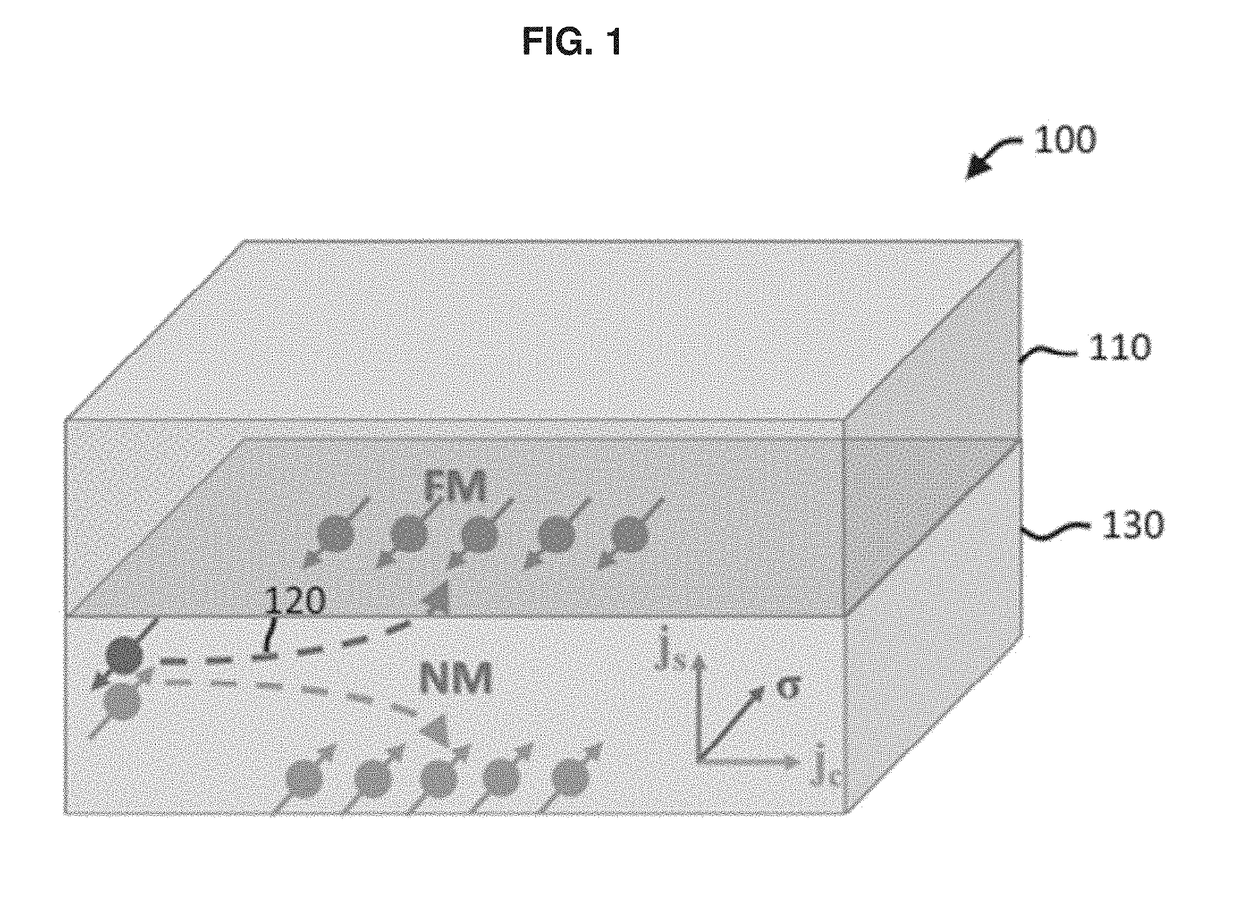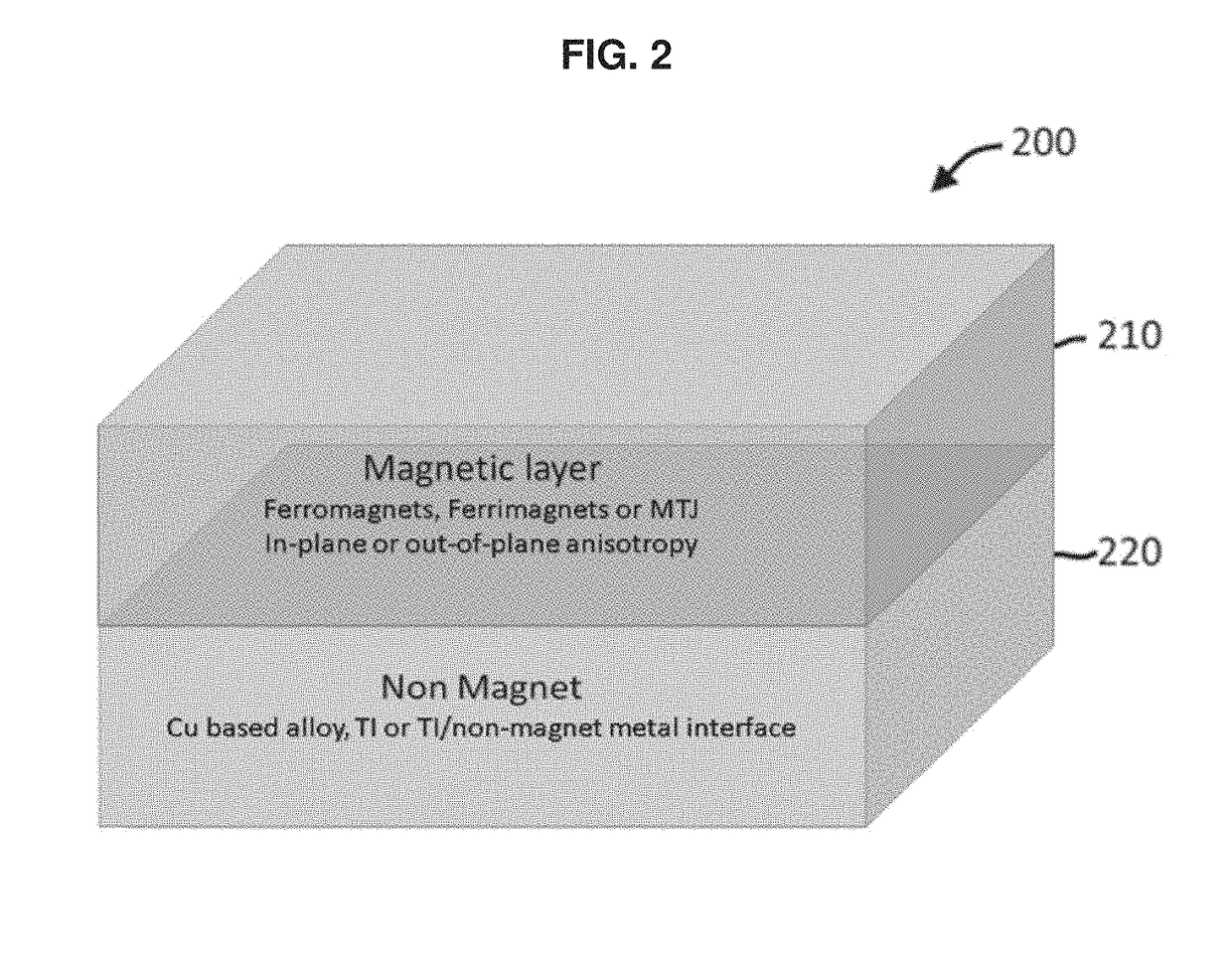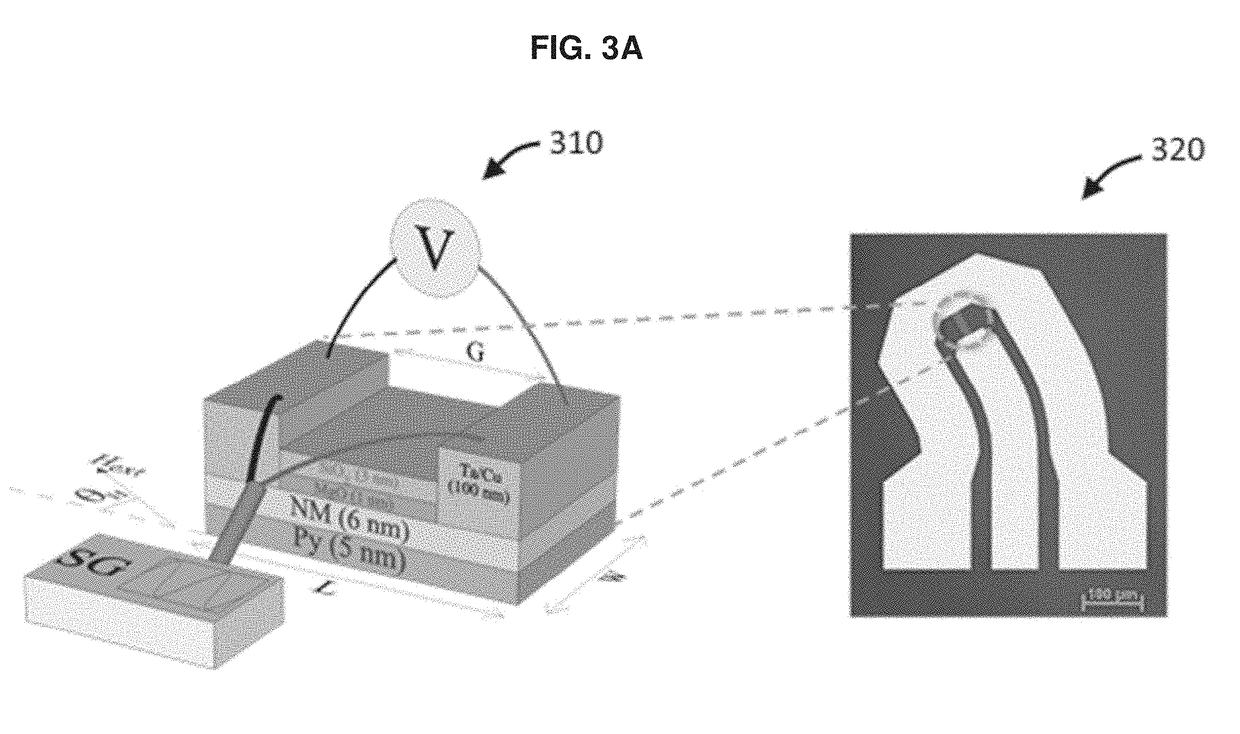Spin orbit materials for efficient spin current generation
a technology of spin orbit and materials, applied in the field of spin torque devices, can solve the problems of high power consumption, hindering sot based applications, and proving problematic to integrate sot devices with cmos technology
- Summary
- Abstract
- Description
- Claims
- Application Information
AI Technical Summary
Benefits of technology
Problems solved by technology
Method used
Image
Examples
first embodiment
[0034]In a first embodiment, a SOT device replaces a traditional NM layer with a CMOS-compatible composite alloy (e.g., a Cu-based alloy such as CuPt alloy) NM layer that provides an extrinsic SHE mechanism. For example, in this embodiment, a SOT device may be structured as a stack that includes a substrate made of silicon (Si), a FM layer of permalloy (Py) (Ni8iFe19) (e.g., having a thickness of 5 nanometers (nm)), a CMOS compatible composite alloy NM layer made of Cu1-xPtx (e.g., having a thickness of 6 nm) where x (0-100%) is the atomic ratio of Pt in Cu1-xPtx alloy, a barrier layer of MgO (e.g., having a thickness of 1 nm), and a capping layer of SiO2 (e.g., having a thickness of 3 nm). The entire film stack may be deposited onto a thermally oxidized Si substrate at room temperature using magnetron sputtering. The composite alloy of Cu1-xPtx may be deposited by co-sputtering Cu and Pt targets. In order to tune the Pt concentration (x) in the Cu1-xPtx alloy, the sputtering power ...
second embodiment
[0057]In a second embodiment, a SOT device stack replaces a traditional NM layer with a topological insulator (TI) (e.g., Bi2Se3, BixSe1-x, Bi1-xSbx, etc.) NM layer. A large SOT may be generated using a TI (e.g., Bi2Se3, BixSe1-x, Bi1-xSbx, etc.) that may efficiently switch the magnetization of an adjacent FM layer with an extremely low JC. For example, in this embodiment, a SOT device may be structured as a stack that includes, a substrate (e.g., Al2O3), a TI NM layer (e.g., having a thickness of 5-20 QL, where 1 QL is approximately equal to 1 nm), a FM layer (e.g., CoFeB or NiFe, having a thickness of 7 nm), a barrier layer of MgO (e.g., having a thickness of 2 nm), and a capping layer of Al2O3 (e.g., having a thickness of 3 nm). The TI layer may be grown on the substrate using molecular beam epitaxy (MBE) or sputtering. The CoFeB layer and insulating capping layer may be sputtered onto the TI layer. The deposited films may be patterned using optical photolithography and Ar ion mi...
third embodiment
[0075]In a third embodiment, a SOT device stack replaces a traditional NM layer with a TI / non-magnetic metal interface (e.g., a Bi2Se3 / Ag, BixSe1-x / Ag, Bi1-xSbx / Ag, etc. interface) layer adjacent to the FM layer. A TI / non-magnetic metal interface (e.g., Bi2Se3 / Ag interface) Rashba effect can induce efficient charge-spin conversion. This Rashba interface may serve as a spin current source to achieve TI-based room temperature spin devices with high scalability and efficiency. For example, in one embodiment, a SOT device may be structured as a film stack that includes a substrate made of Al2O3, a Bi2Se3 / Ag interface layer (e.g., having a Bi2Se3 thickness of 10 QL where 1 QL is approximately equal to 1 nm, and an Ag thickness (tAg) up to 5 nm), a FM layer of Co40Fe40B20 (e.g., having a thickness of 7 nm), a barrier layer of MgO (e.g., having a thickness of 2 nm), and a capping layer of SiO2 (e.g., having a thickness of 4 nm).
[0076]B. An Example Test Device and In-Plane Torque / Out-of-Pla...
PUM
 Login to View More
Login to View More Abstract
Description
Claims
Application Information
 Login to View More
Login to View More - R&D
- Intellectual Property
- Life Sciences
- Materials
- Tech Scout
- Unparalleled Data Quality
- Higher Quality Content
- 60% Fewer Hallucinations
Browse by: Latest US Patents, China's latest patents, Technical Efficacy Thesaurus, Application Domain, Technology Topic, Popular Technical Reports.
© 2025 PatSnap. All rights reserved.Legal|Privacy policy|Modern Slavery Act Transparency Statement|Sitemap|About US| Contact US: help@patsnap.com



